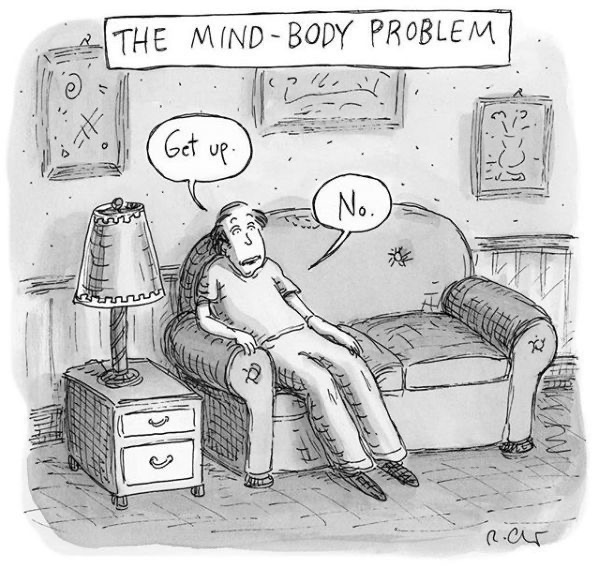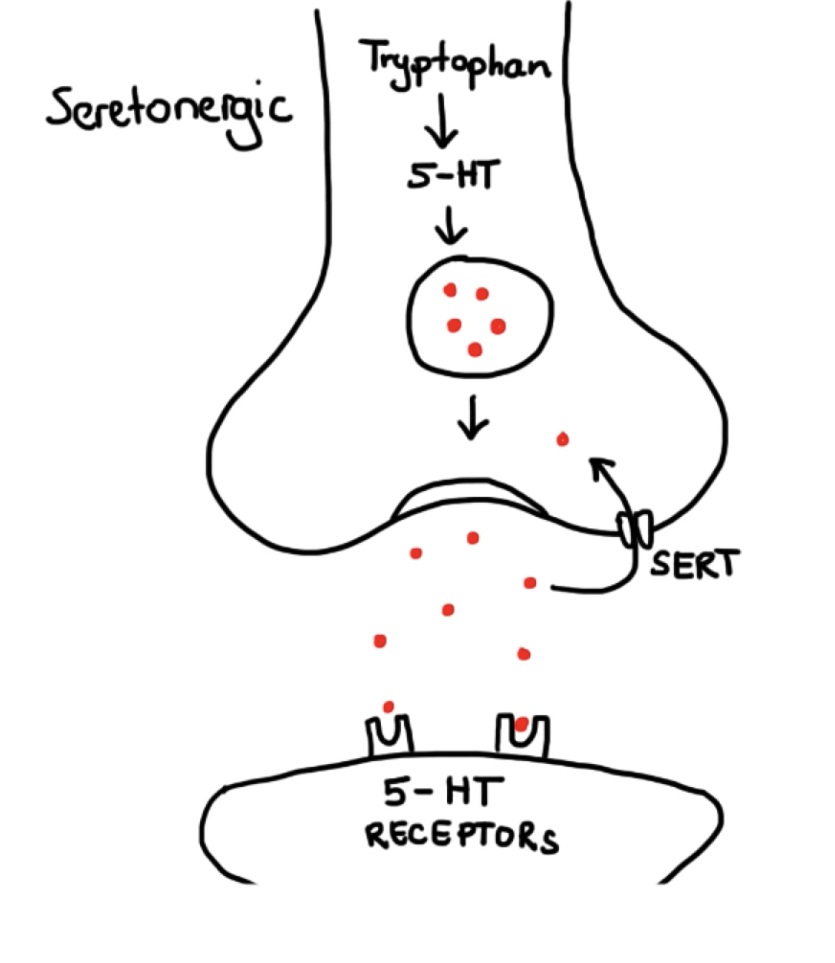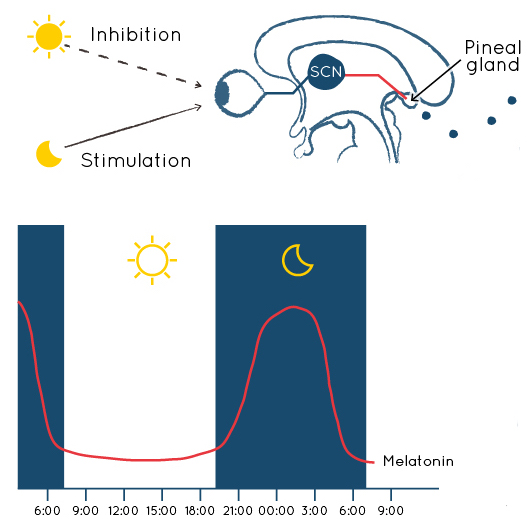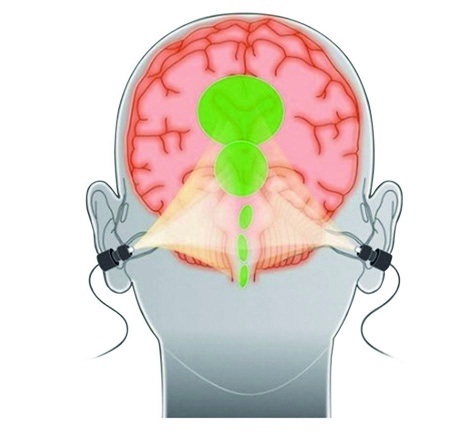“Hurry, get up.”
You stare at the ceiling and murmur to yourself. Your head is splitting, your body feels heavy, and on this cold, bleak winter morning, once again, it feels too difficult to get out of the bed. Even when you finally make this great achievement just like crossing the finish line, you still feel exhausted, sluggish, and hard to focus on work during the winter’s day.
But don’t blame yourself for this. Feeling more tired and depressed in winter is not your fault. Instead of being simply explained by declining willpower in cold weather, this phenomenon actually arises from a series of physiological effects called Seasonal Affective Disorder, which is experienced by more than 10 million people in this country.
The mechanism behind Seasonal Affective Disorder is complicated. As a carbon-based creature, your feelings of happiness and well-being are built on numerous reactions between organic molecules. One indispensable regulator is serotonin, a transporter of neural signals, which is synthesized in presynaptic neurons and released to the synaptic cleft, then absorbed by serotonin receptors. This harmonious co-ordination makes you feel positive after having a chocolate bar or finishing your lab report.
However, based on cross-sectional neuroimaging studies, Brenda McMahon and his research group found that in winter, people with Seasonal Affective Disorder have 5% more serotonin transmitters (also called SERT), which will “capture” free serotonin molecules and transport them back to presynaptic neurons.
The direct treatment for this is taking pills designed to inhibit the concentration of serotonin transporter. The most popular choice is SSRI, i.e. Selective Serotonin Reuptake Inhibitors, including Prozac, Paroxetine, etc. By binding to and inactivating serotonin transporters, this drug increases the level of serotonin available in the synaptic cleft. As one of the most prescribed drugs in America, to some individuals, SSRI works well.
But there are two problems. Firstly, SSRI has nonnegligible side effects. In an experiment conducted by Kylie Thaler, up to 27% of Seasonal Affective Disorder patients treated with SSRI had adverse effects such as nausea and headache and finally dropped out of the research. Additionally, overall, this drug only works about 40% of the time.
Scientists then turn to an indirect method to fortify the level of serotonin in winter: synthesizing vitamin D, which is an essential micronutrient in helping maintaining an optimal environment to synthesize serotonin, and for human beings, exposure to sunlight provides over 90% of the daily dosage of vitamin D. As a result, it’s easy to understand why we may suffer from vitamin D deficiency and unbalanced extracellular fluid serotonin concentration during the dim, gloomy winter, and it seems like sun tanning becomes the go-to strategy of Season Affective Disorder.
But as you may have noticed, the key of enhancing vitamin D synthesis is exposing your skin directly to the sunlight without any protection from sunscreen or sunglasses to filter the light in ultraviolet region (UV), only which, however, functions in turning steroids into vitamin D. Since UV light will trigger mutations in gene sequence and destroy our genetic information, it’s not a good deal to treat Seasonal Affective Disorder at the price of skin cancer.
Till now, it seems like we reach an impasse. But as mentioned before, besides serotonin, there are many other organic chemicals participating in the formation of Seasonal Depressed Feelings. One main character is melatonin.
As a pivotal monitor of your biological clock, melatonin to your circadian rhythms is just like Caesar to Rome. It designs your in-body calendar, regulates your circadian phase, and makes a balance between sleep and awake time.
The way that our body uses melatonin to control our biorhythms is simple: when light is conveyed by the retina, opsins, a group of proteins, turns the light signal into a neural signal, which reaches the suprachiasmatic nucleus in your hypothalamus, and suppresses the melatonin release inside pineal gland. In 2017, Ashutosh Jnawali proves that melatonin release is totally dependent on light exposure which could effectively decrease the activity of a gene called AANAT, which catalyzes the penultimate step in the synthesis of melatonin. Hence during winter, the decreased daytime triggers a higher level of melatonin, and we are more likely to feel like a bear ready for hibernation (just as bears eat a lot to store energy before hibernation, don’t feel surprised at your unusual good appetite in winter, which is another symptom of Seasonal Affective Disorder).
Given this mechanism, a non-drug treatment based on your natural physiological function is Light Therapy. The rationale of this strategy is to suppress the daytime melatonin synthesis, improves your sleeping quality, and decrease Seasonal Affective Disorder symptoms by exposing to extra light in the relatively dimmer season.
In 2019, Pierre A. Geoffroy found that in clinical settings, compared to the combination of antidepressant drugs and placebo, there is a superiority of Light Therapy + Placebo (54% remission rate) in relieving the symptom of both seasonal and non-seasonal depression (50% remission rate). Additionally, the effect of a combination of Light Therapy + antidepressant drugs is confirmed to be considerably stronger than drugs + placebo, which further proves the therapeutic function of light in Seasonal Affective Disorder.
Here, you may start to wonder: given the same exposure to light, why does the process of synthesizing vitamin D come along with skin cancer risk, but Light Therapy has nothing to do with it? The reason is in Light Therapy, the light we make use of (i.e. the signal captured by your retina) is visible light rather than ultraviolet light. Put it in another way, if you want to get good use of sunlight to control the melatonin synthesis, feel free to use sunscreen to protect your skin.
Of course, for those who live in the place heavy on raining days in winter, a better choice is light box, which is designed to filter the UV light and keep only visible light to treat Seasonal Affective Disorder.
To the patient with eye problems such as glaucoma, light stimulation to eyes could be dangerous. But this doesn’t mean that light therapy is inaccessible to them: A pilot study conducted by Markku Timonen found out that to regulate the secretion of melatonin, light can be transmitted via ear canals, i.e. through non-opsin mediated pathways.
Though over species, most of the light signal is transduced by opsin in the retina, there is a special extra-retinal protein, called OPN3, which can also converse photon into neural responses. In another experiment conducted by Heidi Jurvelin, this extravisual transduction is proved to be effective as 92% of patients with Seasonal Affective Disorder felt better after receiving lumen bright light daily into both ear canals for 4 weeks.
Overall, no matter through eyes or ears, Light Therapy could be a good choice to overcome the depressed feelings during winter with the benefits such as low cost, few side-effects, etc.
The next time when you feel guilty about the tiredness and low-efficiency in winter, please don’t beat yourself up. Just choose a light box (or a fancy bright light headset, as you wish), open the window, or put on shoes to go for a walk under the sun. Winter is not meant to be a sad season: you can make it warm, bright, and vibrant… as long as you embrace the light.
By: B. Tan
References
Geoffroy, P. A., Schroder, C. M., Reynaud, E., & Bourgin, P. (2019). Efficacy of light therapy versus antidepressant drugs, and of the combination versus monotherapy, in major depressive episodes: A systematic review and meta-analysis. Sleep Medicine Reviews, 48, 101213. doi: https://doi.org/10.1016/j.smrv.2019.101213
Jnawali, A., Backus, B. T., Quinlan, E. M., Llerena-Law, C., Viswanathan, S., Joshi, N., … Ostrin, L. A. (2017, June 23). Physiological Effects of Ten Days of Total Darkness in Humans. Retrieved from http://iovs.arvojournals.org/article.aspx?articleid=2641280
Jurvelin, H., Jurvelin, H., Takala, T., Takala, T., Nissilä, J., Nissilä, J., . . . Räsänen, P. (2014). Transcranial bright light treatment via the ear canals in seasonal affective disorder: A randomized, double-blind dose-response study. BMC Psychiatry, 14(1), 288. doi: https://doi.org/10.1186/s12888-014-0288-6
Mc Mahon, B., Andersen, S. B., Madsen, M. K., Hjordt, L. V., Hageman, I., Dam, H., . . . Knudsen, G. M. (2016). Seasonal difference in brain serotonin transporter binding predicts symptom severity in patients with seasonal affective disorder. Brain, 139(5), 1605-1614. doi: https://doi.org/10.1093/brain/aww043
Melrose, S. (2015). Seasonal affective disorder: An overview of assessment and treatment approaches. Depression Research and Treatment, 2015, 178564-6. doi: https://doi.org/10.1155/2015/178564
Ostrin, L. A. (2019). Ocular and systemic melatonin and the influence of light exposure: Melatonin and light exposure. Clinical and Experimental Optometry, 102(2), 99-108. doi: https://doi.org/10.1111/cxo.12824
Thaler, K., Delivuk, M., Chapman, A., Gaynes, B. N., Kaminski, A., & Gartlehner, G. (2011). Second-generation antidepressants for seasonal affective disorder. Cochrane Database of Systematic Reviews (Online), 12(12), CD008591. doi: https://doi.org/10.1002/14651858.CD008591.pub2
Timonen, M., Nissilä, J., Liettu, A., Jokelainen, J., Jurvelin, H., Aunio, A., . . . Takala, T. (2012). Can transcranial brain-targeted bright light treatment via ear canals be effective in relieving symptoms in seasonal affective disorder? – A pilot study. Medical Hypotheses, 78(4), 511-515. doi: https://doi.org/10.1016/j.mehy.2012.01.019
Tyrer, A. E., Levitan, R. D., Houle, S., Wilson, A. A., Nobrega, J. N., & Meyer, J. H. (2015). P.1.i.048 seasonal variation in serotonin transporter binding in seasonal affective disorder and health: A [11 C]DASB positron emission tomography study. European Neuropsychopharmacology, 25, S328-S328. doi: https://doi.org/10.1016/S0924-977X(15)30406-5
Image Credits
Image 1: “The Mind-Body Problem”, The New Yorker, https://www.newyorker.com/cartoon/a20819
Image 2: “Pharmacology – ANTIDEPRESSANTS – SSRIs, SNRIs, TCAs, MAOIs, Lithium”, Speed Pharmacology, https://www.youtube.com/watch?v=T25jvLC6X0w&t=256s
Image 3: “Melatonin”, arigo Biolaboratories, https://www.arigobio.com/news/besides-for-human-arigo-s-melatonin-elisa-kit-also-works-for-arabidopsis
Image 4: “Valkee Human Charger Is Amazing”, Natural Health and Wellness Light Therapy Products, http://www.lighttherapyproductsblog.com/valkee-human-charger-is-amazing/
Image 5: “I Think He’s About to Present Us with an Idea”, The New Yorker, https://www.newyorker.com/cartoon/a17588




